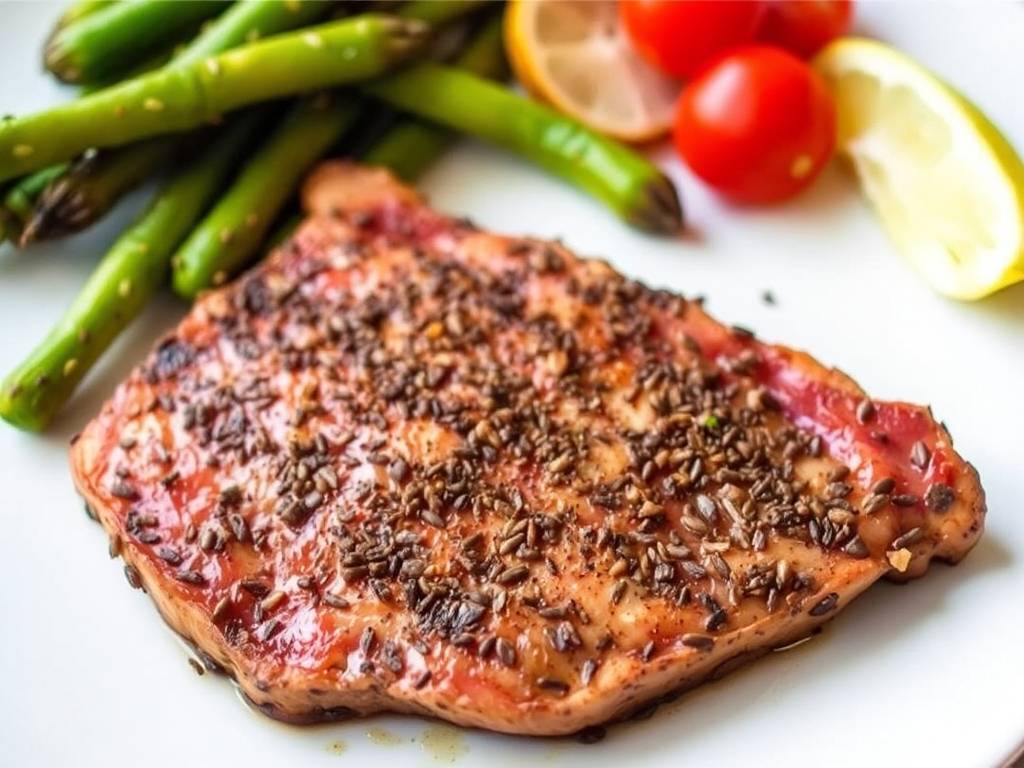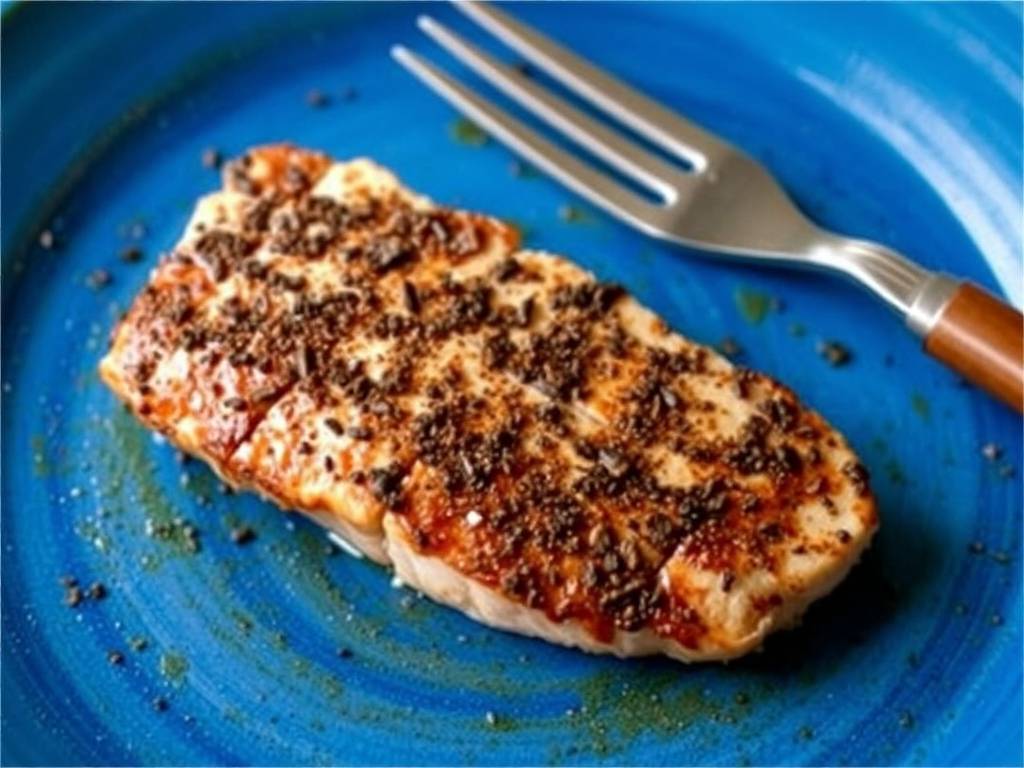The Ultimate Guide to Perfectly Blackened Tuna Steak at Home
There's something truly special about a beautifully seared tuna steak. When you master the art of cooking it with blackened spices, you unlock a world of flavor that feels both gourmet and surprisingly approachable. Many home cooks feel intimidated by the prospect of cooking high-quality tuna, fearing they might overcook this precious protein or fail to achieve that signature crust that makes blackened tuna so remarkable. If you've ever wondered how to create that perfect contrast between the spice-crusted exterior and the rare, delicate interior, you've come to the right place. This comprehensive guide will walk you through every step, from selecting your fish to the final sear, ensuring your blackened tuna steak becomes a show-stopping meal you'll be proud to serve.
Let's start with the foundation: the tuna itself. Not all tuna steaks are created equal when it comes to blackening. For the best results, you want a firm, sushi-grade tuna steak. The term "sushi-grade" might sound fancy, but it simply means the fish has been handled and frozen to specific standards that make it safe to eat raw or rare. Since we're aiming for a rare or medium-rare center in our blackened tuna recipe, starting with high-quality, sushi-grade ahi tuna is non-negotiable for both safety and flavor. Look for steaks that are a deep, ruby red color, about 1 to 1.5 inches thick, with a firm texture and a fresh, ocean-like smell. A thickness of at least one inch is crucial for achieving that desirable gradient from a crispy, spiced crust to a cool, rare center.

Now, let's talk about the heart of the matter: the blackening spice blend. While you can certainly buy pre-made blackening seasoning, crafting your own homemade blackened spice rub is a game-changer. It allows you to control the heat, saltiness, and complexity of flavors to suit your personal taste. A classic blend for blackened fish includes paprika (which provides a deep color and sweet base), garlic powder, onion powder, dried thyme, dried oregano, cayenne pepper (for heat), and freshly ground black pepper. Don't forget a good amount of salt—it not only seasons the fish but also helps form that delicious crust. For a more nuanced flavor profile, you can add a touch of celery seed or even a small amount of unsweetened cocoa powder for depth. Mix your spices in a small bowl until they are fully incorporated. This homemade blackened seasoning will be far superior to any store-bought version and is the secret to an unforgettable seared ahi tuna experience.
Preparation is 90% of the battle. Before you even think about turning on the heat, your tuna steak must be brought to room temperature. Taking the chill off the steak ensures it cooks evenly. A cold steak straight from the fridge will result in an overcooked exterior and a cold, undercooked center. Pat the steak completely dry with paper towels. Moisture is the enemy of a good sear; it creates steam that prevents the spices from adhering and forming a proper crust. Once your steak is dry, drizzle a very light coating of a high-smoke-point oil like avocado oil or grapeseed oil on both sides. Avoid olive oil for this particular cooking method, as it can burn at the high temperatures required for blackening.
Now, generously coat every surface of the tuna steak with your homemade spice rub. Press the seasoning mixture gently into the flesh to make sure it adheres well. Don't be shy—this crust is the star of the show. At this point, your kitchen should already be smelling incredible, and you're ready for the main event: the sear.

The cooking method for blackened tuna is fast and furious. You will need a heavy-bottomed skillet—cast iron is the undisputed champion for blackening. A cast-iron skillet retains and distributes heat incredibly evenly, which is essential for that uniform, dark crust. Place your dry skillet over high heat and let it get screaming hot. This is a critical step. You want to see a faint wisp of smoke rising from the surface before you add your fish. A properly preheated pan is what sears the spices onto the tuna instantly, creating the "blackened" effect without cooking the inside through.
Carefully place your seasoned tuna steak into the hot, dry skillet. You should hear an immediate and aggressive sizzle. Do not add any oil to the pan; the oil on the steak is sufficient. The high heat will cause the spices to smoke and darken—this is normal and exactly what you want! Let the steak cook undisturbed for 60 to 90 seconds. Peeking or moving it around will prevent the crust from forming. After the first side is deeply browned and blackened in spots, use tongs to flip the steak to sear the other side. For a perfect rare center, cook the second side for another 60 to 90 seconds. If you prefer a medium-rare interior, you might go for 2 minutes per side for a one-inch steak. The total cook time should not exceed 3-4 minutes for a standard thickness.
How do you know when it's done? The best method is by touch. A rare tuna steak will feel soft and yielding, similar to the fleshy part of your palm below your thumb. For medium-rare, it will feel slightly firmer. For perfectly cooked blackened tuna, we strongly recommend not going beyond medium-rare. The beauty of this dish is the contrast in textures. If you prefer your tuna more well-done, this cooking method may not be the best fit, as the exterior will become overly charred before the interior reaches a higher temperature.
Once cooked to your liking, remove the tuna steak from the skillet and transfer it to a clean cutting board. This next step is as important as the searing process: let it rest. Allow the tuna to rest for at least 3-5 minutes before slicing. Resting allows the juices to redistribute throughout the steak, ensuring every bite is moist and flavorful.
When you're ready to serve, use a sharp knife to slice the tuna steak against the grain into half-inch thick slices. Slicing against the grain ensures each piece is tender and easy to eat. The presentation of the pink, rare interior against the dark, crackling crust is always a moment of great satisfaction.
Now, what do you serve with this masterpiece? The robust flavors of the blackened tuna pair wonderfully with light, fresh, or creamy accompaniments that can balance the spice. A simple arugula salad with a lemon vinaigrette, a cool avocado salsa, a dollop of lemon-dill aioli, or a side of coconut jasmine rice are all fantastic choices. These sides complement the tuna without competing with its bold flavor profile.
Cooking the perfect blackened tuna steak is a skill that impresses every time. It demonstrates a understanding of heat, seasoning, and technique that elevates a simple piece of fish into a restaurant-quality dish. By following these steps—selecting sushi-grade ahi tuna, creating a robust homemade spice rub, preheating your pan properly, and mastering the quick sear—you are now equipped to create a healthy, delicious, and stunning meal any night of the week. So, grab your skillet and your spices, and get ready to enjoy one of the most rewarding seafood dishes you can make at home.






发表评论